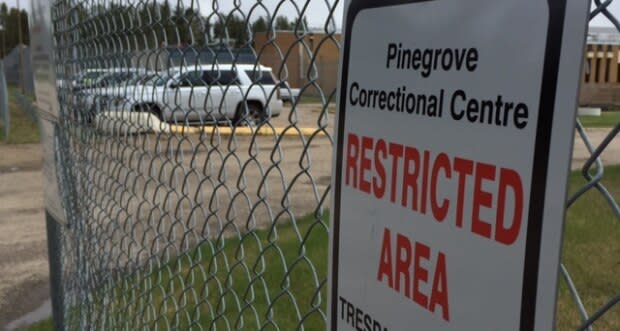Sask. considering jail expansions — again — as female inmate numbers rise
The province has drawn up plans to expand Saskatchewan jails and address overcrowding that has inmates sleeping in a gym, but the Ministry of Corrections says no decision has been made on whether to go ahead with a new build.
"I would say we're looking at it with a degree of seriousness in terms of what our needs are and if that build is required," said Drew Wilby, the assistant deputy minister of corrections.
Female inmates at the Pine Grove Correctional Centre have been sleeping in an overflow area for two months. The facility is built for 188 inmates but numbers have reached up to 220.
Pine Grove went through a 60-bed expansion in 2012 to meet increasing demand at the time.
Now those beds are full and a "dorm unit" filled with bunk beds has been set up in the jail's gymnasium. It has been there since Aug. 13.
"We have seen female numbers go up quite significantly, especially in the last year," said Wilby.
"It's unclear really why that is. We have some indication to suggest maybe the onset of meth into the province is driving some of those numbers up."
Twenty beds for women were opened up in the White Birch Female Remand Unit in Regina about five years ago.
Wilby said the province is doing research to further explain the "influx" of female inmates, which he said is worse in the fall and spring.
Meanwhile, other facilities are also facing problems with overcrowding, including the Saskatoon Correctional Centre.
Gang conflict in August sent the facility into lockdown after numerous brawls and a stabbing that hospitalized one inmate.
Building a bigger space or a prison with more beds … it's not really solving the issue of over-incarcerating. - Jonna Reaume, Elizabeth Fry Society of Saskatchewan
Wilby said feuding reduces the number of available beds because some inmates have to be separated. Some are known as "bed blockers."
"These numbers do create stress on the system, that does create stress on the staff, and we need to make sure that we're looking out to those needs," Wilby said.
"Our primary concern in any of our facilities is safety and security of staff and inmates at the facility itself. And we need to make sure that we're attuned to those needs if and where they are required."
An additional 144 beds were added to the Prince Albert Correctional Centre in 2015.
The ministry has been researching what any potential further expansions would look like and where they might be located.
Wilby said the province would be open to partnering with the federal government on a joint facility if that was an option.
However, he said the usual process would be to propose new construction through the provincial budgeting process, which will be starting soon.

Increasing the number of beds is not the desired solution for the ministry, or for the organizations that support the inmates.
Jonna Reaume is a social worker and assistant director at the Elizabeth Fry Society of Saskatchewan.
"Building a bigger space or a prison with more beds … it's not really solving the issue of over-incarcerating," said Reaume.
"It's just putting more women in these institutions when we believe they could be better served in the community."
She said women in Pine Grove who are on remand — meaning they have been charged but not convicted of a crime — make up a lot of the inmate population overall.
Many incarcerated woman are 'legally innocent'
These women are "legally innocent," said Reaume, but being on remand means they don't have the same access to programming and resources behind bars.
"We really, really strongly believe and advocate for putting more resources into community, into more treatment beds, into more emergency shelters for women," she said.
"Those kinds of things that can really get people stabilized in the community rather than removing them and separating them, putting them into prison, dealing with all the things that happen after that."
Wilby said efforts are being made to keep people who don't need to be in jail out of custody while they await their court proceedings.
Community alternatives, such as beds at non-profit organizations, are one option to avoid unnecessary incarceration.
Wilby said police, lawyers and prosecutors sometimes meet on weekends to try to come to a resolution before they get to court on Mondays.
"The quicker those things can get rectified the less population there is there," said Wilby.
Inmate numbers under close watch: Ministry
Community intervention is another way the ministry is trying to reduce the number of people behind bars. It's trying to keep individuals away from gangs through the Gang Violence Reduction Strategy, for which it has received about $12 million in federal funding.
Wilby said the number of incarcerated youth has dropped by around half in the past 10-15 years due to changes in sentencing practices and different approaches. The ministry is considering whether similar measures could have the same success for adult offenders.
For now, Wilby said the ministry is keeping a close eye on inmate numbers.
"We wouldn't want to build a whole bunch of new beds and, of course, have nobody come to them," he said.
"But at the same time we need to make sure that we're [alert] to those considerations because it's possible we will need that."

